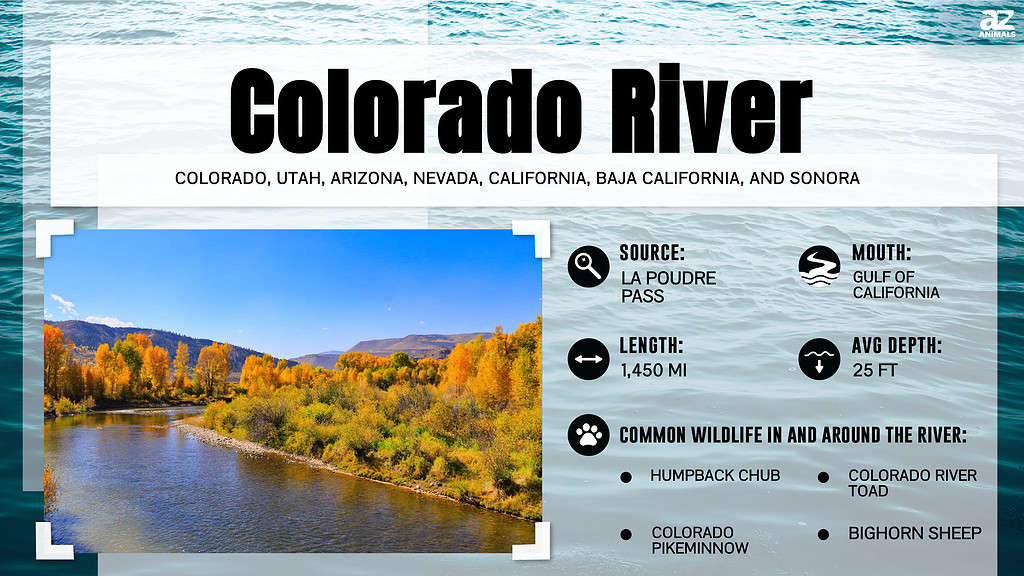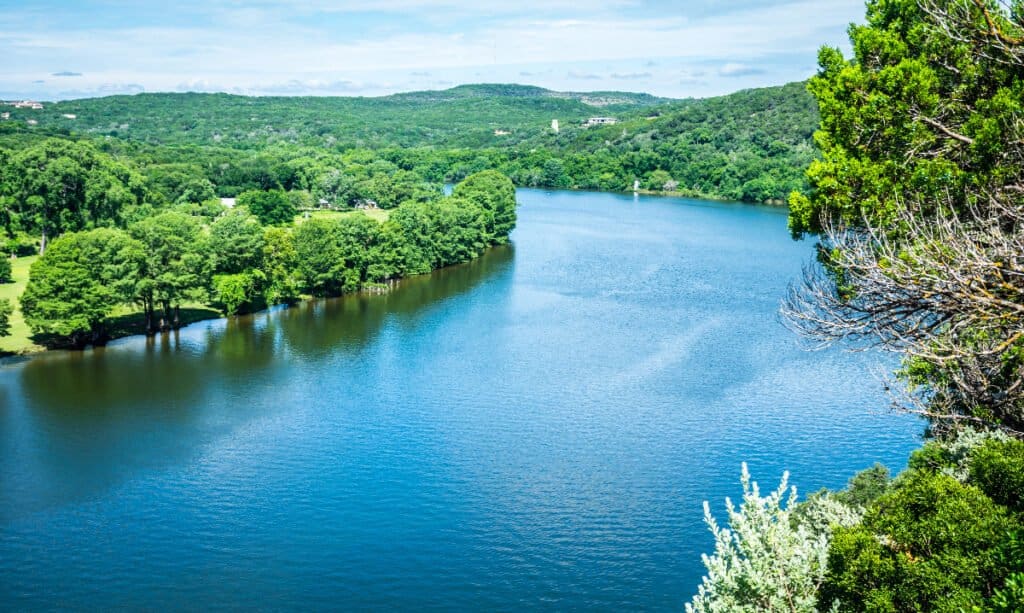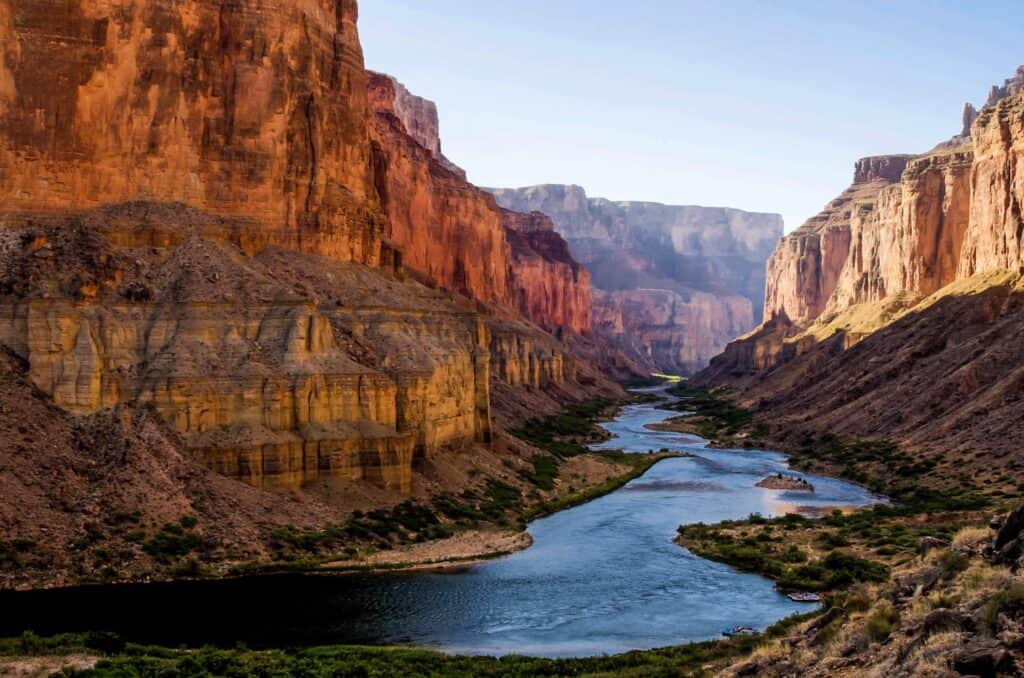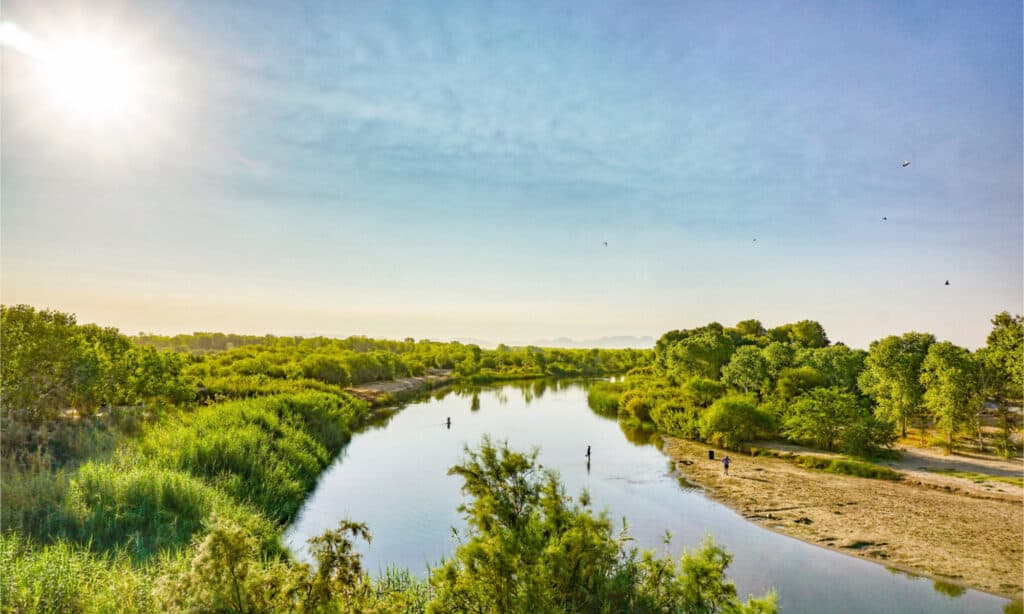The American Rivers Organization named the Colorado River the most endangered American River in 2022. The Colorado River is famous for multiple reasons, including being the 6th largest American River, claiming the spot 47th largest river in the world, supplying 40 million people with drinking water, and even supporting a $1.4 trillion economy.

Due to these and many more, the river is officially the most controlled in the world. If you’d like to find out why the Colorado River was named the most endangered American river in 2022, you’re reading the right article. Let’s get started.
How Large is the Colorado River?
The Colorado River is 1,450 miles (2,330 km) long and drains a large watershed that touches seven US and two Mexican states. The river starts in the Colorado Rocky Mountains and flows through the Grand Canyon before ending at Lake Mead.
Why is the Colorado River the Most Endangered American River in 2022?

Measuring 1450 miles long, the Colorado River drains a large watershed that touches seven U.S. states and two Mexican states.
©Roschetzky Photography/Shutterstock.com
There are several reasons that the Colorado river is endangered including climate change, rising temperatures, drought, outdated management, and overallocation to excessive levels.
Considering just how much depends on the Colorado River, it’s no surprise just how controlled it is. The major problem is that there isn’t enough water in the Colorado River to meet all the needs. The American Rivers Organization states that management plans for the river were built on the false analysis that the river carried nearly 18 million acre-feet.
In reality, the river carries only about 13 million acre-feet. The 5 million deficit is significant enough to attract worry as the river’s flow is depleting at an alarming rate. In addition, Colorado and many other parts of the world are recording hotter temperatures which further help the water dry. Experts estimate that due to the over-usage and climate change, the river’s flow is expected to have depleted by 10 to 30 percent by 2050.
Impacts of the Colorado River’s Endangerment

Experts approximate that due to the over-usage and climate change, the Colorado River’s flow is expected to have depleted by 10 to 30 percent by 2050.
©Beth Ruggiero-York/Shutterstock.com
In addition to affecting the availability of water, some of the most pressing impacts of the river’s endangerment are financial, natural, and even agricultural.
Financial
As we’ve stated before, the Colorado River supports a large $1.4 trillion economy, providing hundreds of thousands of jobs. Many workers’ job security and the economy will suffer if the river continues to dry up.
Less Water Availability
The river provides 40 million people with clean and safe drinking water. Without it, they would be forced to increase reliance on other rivers, such as Lake Mead and Powell, which are also depleting. The cost of drinking water will definitely go up, and if nothing is done, a scarcity could ensue.
Natural
The Colorado River is home to 55 native species of fish and many more aquatic plants and animals. Their lives, habitats, and well-being depend on the river, and as it dries up, several problems are created. For starters, since fewer habitats will be available, some species that heavily depend on deep and hidden habitats to stay away from prey will get over-hunted. Whatever little space is left will be taken up by the largest and strongest animals, which, more often than not, are invasive species.
Since food isn’t available infinitely, the competition will be tough, and the weaker or disadvantaged animals will die fast. Remember that when one species dies out, one or multiple species lose either a prey or a predator, which leads to less food availability, leading to another species dying out.
This will deal quite a blow to Colorado and America’s wildlife, considering the over 447 species of birds, 91 mammals, 48 reptiles, 10 species of amphibians, and hundreds of invertebrates like spiders living in and around the Grand Canyon directly or indirectly depend on food and water from the river. When animals die out before scientists can carefully study them, knowledge is lost forever. Scientists can often improve or create life-changing technology from knowledge gained from studying plants and animals.
In addition, some of Colorado’s wildlife, such as the Humpback Chub (Gila Cypha), Bonytail Chub (Gila Elegans), and the Razorback Sucker (Xyrauchen Texanus), are endangered. Some species, such as the Colorado Pikeminnow (Ptychocheilus Lucius), aren’t naturally found outside Colorado.
Agricultural
The Colorado river also supports the agricultural industry with water for irrigation. Without it, farmers would have to supply their plants with water through other means, which will either be more expensive and harder to get or simply tasking on America’s other rivers.
In general, if nothing is done to save the Colorado River, the financial, natural, and agricultural effects might affect the daily lives of every single American. Remember that fresh water is finite and exhaustible because it is always in high demand.
What Can Be Done to Protect the Colorado River and Its Watershed?

The creation of natural infrastructure strategies by the government would help in protecting the Colorado River.
©Enrique Alcala/Shutterstock.com
The major thing that can be done to protect the Colorado River and its watershed is the creation of natural infrastructure strategies, which can only be done by the government. The right natural infrastructure strategies will provide water reuse and recycling funding, invest in healthy nature-based watershed solutions, and improve agricultural infrastructure. Such laws will ensure:
- The use of the river is regulated
- Drought impacts are reduced
- Water quality is improved
- More jobs are created to restore natural landscapes and parts of the rivers that have already dried up.
- Positive forest and green gas laws are passed
- Groundwater recharge is increased
- Water availability doesn’t drop during the summers
- Reduced threats of fires
- Sustainability of thousands of plants and animal species.
The list goes on!
How Can You Help?
If you love the Colorado River and would like to do your bit to help, here are some tips to consider:
- Volunteer at your local river care or protection organization
- Reuse, reduce, and recycle
- Plant native trees at shorelines and river banks and avoid deforestation
- Properly manage your septic system
- Manage your water use by having shorter showers, doing larger laundry loads, and turning off the tap when it isn’t in use, even when you’re just brushing.
What are the 10 Most Endangered Rivers in America?
According to the American Rivers Organization, the 10 most endangered American rivers are listed below:
- Colorado River
- Snake River
- Mobile River
- Maine’s Atlantic Salmon Rivers
- Coosa River
- Mississippi River
- Lower Kern River
- San Pedro River
- Los Angeles River
- Tar Creek River
Up Next…
Here’s What a ‘Catastrophic Collapse’ of the Colorado River Looks Like
How Deep is the Colorado River?
Why the Colorado River Was Named America’s Most Endangered River in 2022
The photo featured at the top of this post is ©
Thank you for reading! Have some feedback for us? Contact the AZ Animals editorial team.







